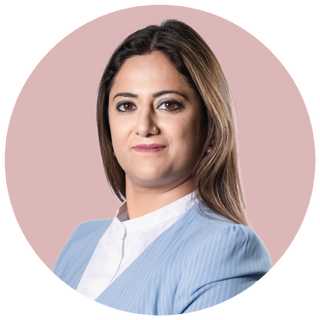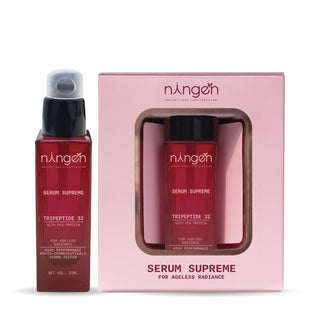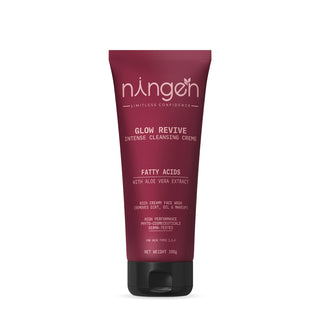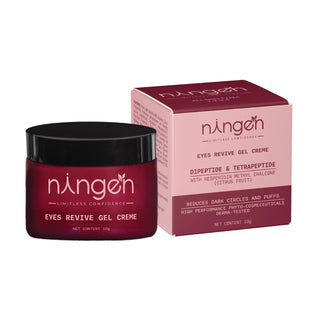That beauty routine you love might be hiding a dangerous secret. New research reveals what you should know before your next skincare and haircare.
Have you ever flipped over your shampoo bottle and tried deciphering that long ingredient list? If you're like most of us, you probably glance at it, shrug, and continue your shower routine without a second thought. But a new eye-opening study suggests we might want to pay closer attention to what's lurking in our bathroom cabinets.
In this Guide;
The Ugly Truth Behind Your Glow
The Science Behind Formaldehyde’s Toxic Effects on Skin
How to Spot (and Stop) the Poison?
Protecting Yourself and Your Family
The Ugly Truth Behind Your "Glow"
You slather on that ₹299 shampoo, spritz your favorite body mist, and apply "24-hour stay" eyelash glue—all in the name of beauty. But what if your quest for flawless skin and silky hair is feeding you a slow poison? A shocking new study reveals that formaldehyde—the same chemical used to preserve corpses—is hiding in everyday products, from shampoos to lotions. Even worse: 53% of women in a Los Angeles study used these products daily. For India, where fairness creams outsell books and haircare is a ₹1.2 trillion industry, this isn’t just a scandal—it’s a public health emergency.
The Science Behind Formaldehyde’s Toxic Effects on Skin
Formaldehyde, a common preservative in beauty products, harms skin in dangerous ways:
-
DNA Damage → Cancer Risk
-
Forms cross-links (like glue) between DNA strands or DNA and proteins, jamming cellular machinery.
-
Damaged DNA can’t be repaired properly, leading to mutations. Over time, this may trigger uncontrolled cell growth (cancer).
-
Protein Destruction → Irritation
-
Denatures skin proteins like keratin, altering their structure. This causes inflammation, redness, and allergic reactions (rashes, itching).
-
Slow Poisoning → Cumulative Harm
-
Doesn’t evaporate quickly, so it lingers on skin.
-
Repeated use leads to buildup in the body. Skin can’t detoxify it well, raising risks of chronic dermatitis or long-term damage.
-
Sneaky Exposure → Formaldehyde-Releasers
-
Chemicals like DMDM hydantoin act as “time-release capsules,” slowly leaking formaldehyde into skin. Even tiny daily doses add up over the years.
Why It’s Worse Than You Think?
-
Bypasses the liver (the body’s detox hub) when absorbed through skin, increasing toxicity.
-
No “safe dose” – even low-level exposure can damage DNA over time.
Bottom line: Formaldehyde isn’t just an irritant – it’s a stealthy carcinogen hiding in your skincare.
Why Should You Care?
1. The Silent Killer in Your Shampoo Bottle
Formaldehyde, a Group 1 carcinogen (proven to cause cancer), isn’t listed plainly on labels. Instead, it’s disguised as preservatives like DMDM hydantoin, Quaternium-15, and imidazolidinyl urea. These chemicals slowly release formaldehyde to prolong shelf life, seeping into your skin with every use.
2. "But It’s Banned in Europe!" – Why India Is Still at Risk?
While the EU banned formaldehyde in cosmetics in 2009, India’s regulations are shockingly lax:
-
The Drugs and Cosmetics Act (1940) allows formaldehyde in concentrations under 0.2%, but enforcement is weak.
-
Counterfeit Cosmetics: Markets are flooded with fake products containing 10x the safe formaldehyde limit.
-
Gender Bias: Women, pressured by fairness ads and salon culture, face higher exposure. A Mumbai study linked formaldehyde-laden hair straighteners to 3x higher uterine cancer risk.
-
Fairness Frenzy: Many popular fairness creams and anti-dandruff shampoos in India contain these preservatives. For example, a 2024 CSE study found formaldehyde in 40% of Indian hair straighteners.
-
Eyelash Glue Epidemic: Cheap, unregulated eyelash adhesives (sold on Amazon India and local markets) often list formaldehyde as a key ingredient.
-
Daily Exposure: The average Indian uses 12 personal care products daily, double the global average.

3. It's Not Just Hair Straighteners Anymore!
For years, we've heard warnings about formaldehyde in hair straightening products. But this new research shows the problem is much more widespread, affecting:
-
Everyday shampoos
-
Body lotions
-
Shower gels
-
Eyelash adhesives
The study found 58% of haircare products contained these harmful chemicals. And the truly concerning part? These ingredients are especially common in products marketed to women of color.
How to Spot (and Stop) the Poison?
Step 1: Decode the Labels
Watch for these ingredients:
-
DMDM hydantoin (common in anti-dandruff shampoos in India)
-
Quaternium-15 (found in baby wipes and body washes)
-
Imidazolidinyl urea (found in moisturizers)
Step 2: Fight Back with Tech
Use apps like Toxics Scan (developed by IIT Delhi) or Think Dirty to scan barcodes in stores.
Step 3: Switch to Safer Alternatives
-
Look for Certifications: Choose products labeled CDSCO-approved or Ayush-certified, which adhere to stricter safety standards and avoid harmful preservatives.
-
Go Back to Roots: Replace chemical-laden shampoos with plant-based, for glossy, toxin-free hair.
-
Natural Preservatives Matter: Opt for products preserved with neem extract, tea tree oil, or vitamin E instead of synthetic chemicals.
-
DIY Beauty Hacks:
-
Swap fairness creams with face packs enriched with natural ingredients.
-
Replace eyelash glue with aloe vera gel for a gentle, formaldehyde-free hold.
-
Opt for toxin-free, safe skincare products.
Pro Tip: Check ingredient lists for terms like “paraben-free” or “formaldehyde-releasing 4. The Bigger Picture: Beauty Standards vs. Blood
Formaldehyde isn’t just a chemical—it’s a symbol of an industry exploiting insecurities. In India:
-
Fairness Creams: Marketed as “skin-lightening miracles,” many contain formaldehyde-releasing preservatives and mercury.
-
Social Pressure: A 2025 survey found 68% of Indian women feel compelled to use hair straighteners for “professional appeal”.
Protecting Yourself and Your Family
So what can you do? Knowledge is power, friends!
-
Check those labels – avoid products with the ingredients listed above
-
Try clean beauty alternatives – many brands now proudly advertise "formaldehyde-free" formulations
-
Download ingredient-checking apps – tools like Think Dirty and EWG's Healthy Living can help decode labels
-
Speak up – let brands know you're concerned about these ingredients
"Ideally, these ingredients shouldn't be in products to begin with," says Dr. Dodson, and I couldn't agree more.
The Bottom Line: Beauty Shouldn’t Cost Your Life
Your ₹99 eyelash glue isn’t worth a cancer diagnosis. Switch to clean brands, pressure lawmakers, and remember: Radiance comes from health, not chemicals.
What's Next?
Advocates are calling for stricter regulations and more transparent labeling. Until then, it's on us to become informed consumers.
Have you checked your products for these ingredients? Share your discoveries in the comments below!
Frequently Asked Questions
Q1: Which everyday products in India contain formaldehyde?
A: Anti-dandruff shampoos, fairness creams, and cheap eyelash glues.
Q2: How can I identify formaldehyde on labels?
A: Look for DMDM hydantoin, Quaternium-15, or imidazolidinyl urea. Use apps like EWG’s Healthy Living.
Q3: What health risks does formaldehyde pose?
A: Cancer (nasopharynx, leukemia), skin allergies, and hormonal disruption.
Q4: Are there affordable Indian brands without formaldehyde?
A: Yes! Some brands offer safe alternatives under ₹500.
Q5: Is India planning to ban formaldehyde?
A: The Safe Cosmetics Bill 2023 is pending. Until then, demand action via petitions on Change.org India.
Source:












